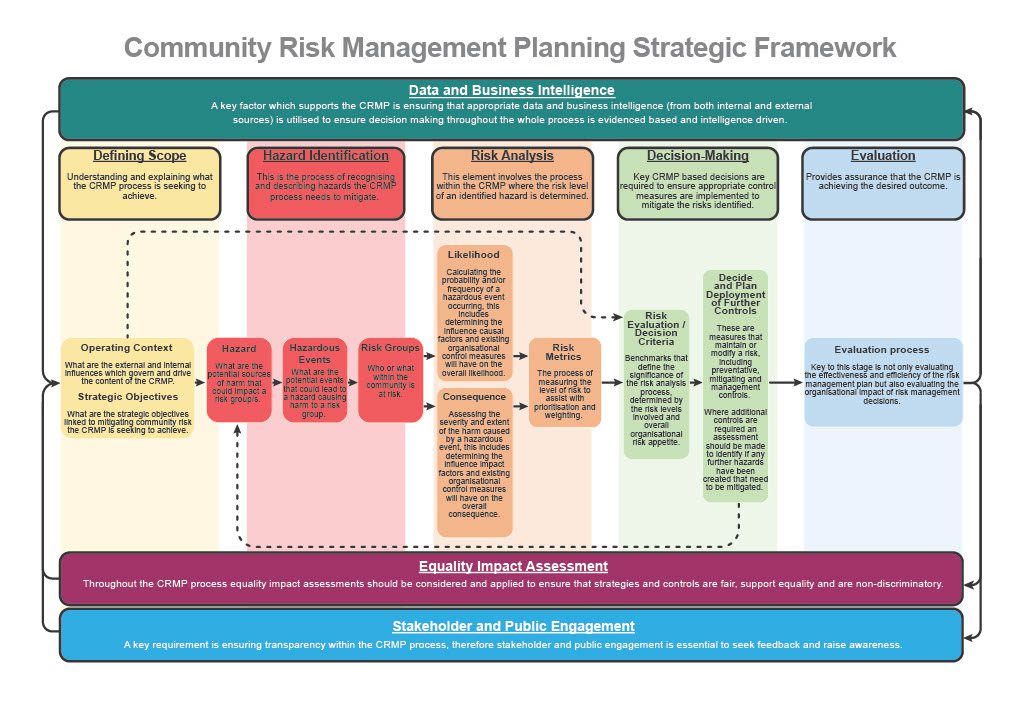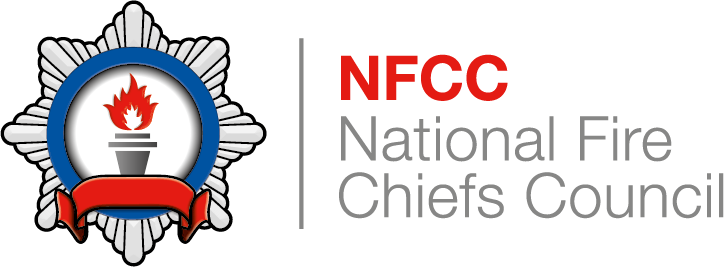Community risk management planning strategic framework
Working in close conjunction with the Definition of Risk project, the CRMP Guidance project has produced the following Strategic Framework. This combines the conceptual risk framework developed in phase one of the Definition of Risk project with all the key components of a Community Risk Management Planning process.

These are illustrated sequentially and in an easy-to-understand manner to emphasise that a CRMP process comprises three themes:
- Data and Business Intelligence
- Equality Impact Assessment
- Stakeholder and Public Engagement
These themes support the main components which include:
- Defining Scope
- Hazard identification
- Risk Analysis
- Decision-Making
- Evaluation
It is envisaged fire and rescue services will eventually adopt the Strategic Framework as the basis for their own CRMP process. In doing, so it will also help with aligning to the content and requirements detailed in the CRMP Fire Standard, as the framework has been used as the foundation for its the development.
